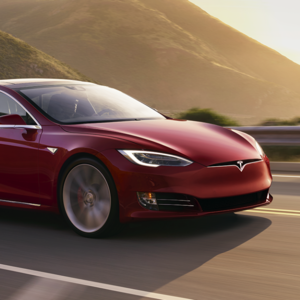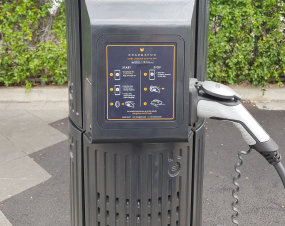The Hyundai Ioniq is no longer just a model, apparently. The label, a near-enough portmanteau of ‘ion’ and ‘unique’, is to become Hyundai’s official sub-brand for future electric vehicle models, three of which were confirmed in yesterday’s announcement by the Korean automaker.
Each of the Ioniq sub-brand models will be named with a single number; evens for sedans, odds for crossovers and SUVs. According to Hyundai the Ioniq 5, a midsize crossover, will be first to debut in 2021 — although not necessarily so soon in Australia; let’s not forget it took two years for the original Ioniq to arrive here after its 2016 Korean release.
The Ioniq 6 will be next: a sedan based on the ‘45‘ concept revealed at the Frankfurt Motor Show last year. Finally, the Ioniq 7 SUV will drop in 2024.
So the first three Ioniqs will be called 5, 6, and 7. Except they’re not the first three Ioniqs, they’re the 2nd, 3rd, and 4th Ioniqs, potentially even the 4th, 5th, and 6th Ioniqs if we count all three versions of the current Ioniq, which may or may not continue to exist once the new Ioniqs become available. You following so far?


The name game
And Hyundai aren’t the first automaker to set up an entire sub-brand for their EVs, or to adopt a single-digit naming scheme.
Volkswagen did it late last year with reveal of the ID ‘family’, the first of which is set to start selling in Europe from next month. The ID.3 electric hatch will be followed by an SUV, the ID.4, which is expected to be the first electric Volkswagen to come to Australia.

Volkswagen’s electric SUV is coming to Australia
With all this number-naming going on, it’s reassuring to find at least one OEM starting their count at one. Volvo’s premium electric sub-brand Polestar released their first model, the 1, in 2019, with their second, the 2, to follow sometime next year. No points for guessing what the third will be called.
T is for Tesla
It doesn’t take a genius to guess where the idea came from. Tesla kicked off their monocharacter names with the Model S in 2012. That same year they revealed the first Model X prototype and by 2015 the Model 3 had been unveiled, cementing it as Tesla’s de-facto naming scheme right as many legacy OEMs started seriously working on their own EV lineups.
Officially, Tesla’s marketing department cite the iconic Ford Model T as the inspiration for their naming system, but it’s hard to argue that any other EV automakers are looking that far back for inspiration. Unofficially, the S, 3, X, Y names are Elon Musk making a #cool middle-school joke.
So why the weird names?
More likely than the Model T explanation, automakers have watched Tesla reap the benefits of translating smartphones’ brand-forward marketing approach to cars, and assumed it as the model for all future EVs to follow. People don’t buy a 10 or an 11, they buy an iPhone; likewise the specific variant-name of each new Tesla is sidelined for the sake of centering the brand itself.
But perhaps it’s unfair to paint this as a new phenomenon. BMW have been using equally minimal, ordinal names on their cars since the 1930s; even on electrics they got out ahead of the trend with the i3 in 2013 and the plug-in i8 in 2014.
Other German automakers work the same way. Mercedes have been happy to label their electric EQ line as its own brand, but the approach feels much more par-for-the-course coming from an OEM that’s been pumping out single-character ‘series’ for decades. EQC and EQS aren’t so far from C-Class, S-Class, CLS-Class etc.
And Audi’s names have been simple for decades. Their first car was the 60 dropped in 1969. Since then they’ve progressed through nondescript letters and digits with almost every model. Depriving the model name of any meaning puts the brand front-and-centre in the minds of buyers, which is exactly what these high-end automakers want. The robotic efficiency is just a bonus for these Germans.
Non-premium brands can pull the same trick with their typical mark, but not with the same “luxury” connotations. A Hyundai i30: not sexy, but remembered as a Hyundai. An Ioniq 5? Potentially sexy, but definitely remembered as an EV. Nobody is going to say they drive a 5, but they might stop calling it a Hyundai, and that’s when the marketing department will know the trick has worked.
But as clever as sub-branding is, it’s not the only way to make people recognize a model for its electric pedigree.
e-Car; Car EV; Electric Car
Of course, it’s also possible to just slap e- or i- into an otherwise mundane model name and have the same effect. Ford’s first EV isn’t just a Mustang, it’s a Mach e. Fiat’s new hatch isn’t a 500, it’s a 500e. Already on the roads are the Jaguar I-PACE, the Audi e-tron. You might even find a 2012-era Mitsubishi i-MiEV out there somewhere if you look hard enough.
Alternately, for easiest comprehension, paste EV or Electric at the end of the name, e.g. GM’s recent debut of the Hummer EV or the MINI Electric. Kia couldn’t even choose an approach when they electrified the Niro. US customers can order the Niro EV while those in the UK are getting the e-Niro.


Hyundai’s original Ioniq lineup (i.e. the current one) did a similar thing. The three variants sold in Australia are the Ioniq Hybrid, Ioniq Plug-in Hybrid, and Ioniq Electric. Pretty simple; certainly more so than the 5 or 6 or 7.
But the prize for most minimal EV name has to go to the Honda e. The shortest possible name, stylised in lower-case, with no sub-brand or number or date to accompany it. Bravo, Honda.
Exceptions
However they’re phrased, all the wacky names cited above are clearly intended to draw attention to the fact that the vehicles are electric. It makes sense; EVs are new and cool, why not lean into it as a selling point?
But despite EVs’ newness and coolness, some automakers have made a point of deliberately not drawing attention to the electric element. “Normal” EV names include Renault’s Zoe and Kangoo, plus the Hyundai Kona and Tesla’s first effort, the Roadster.
The Nissan LEAF technically also counts, but it’s hard to imagine any combustion car getting a name like that. It probably belongs in the same electric-by-association name category as the Chevrolet Bolt.
The Porsche Taycan Turbo, by comparison, is openly deceitful about its electric status: as an EV, the Taycan does not and could never include a turbo. The name makes no mechanical sense unless you equate turbo with fast.
But who needs a name that makes sense, or is even legible? If there’s one thing we can take from all this, it’s that EV-buyers are happy to accept a non-traditional badge on their car.
Let’s just be grateful that Volkswagen didn’t stick with calling their new lineup CROZZ, BUZZ, ROOMZZ and VIZZION.




